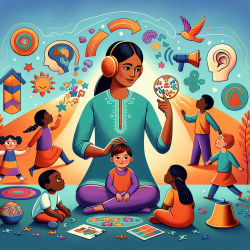Introduction
As practitioners dedicated to improving outcomes for children and families, it is crucial to understand the complexities faced by vulnerable populations. The research article "Multi-service prevention programs for pregnant and parenting women with substance use and multiple vulnerabilities: Program structure and clients’ perspectives on wraparound programming" provides valuable insights into effective strategies for supporting pregnant and parenting women with substance use issues. This blog explores the key findings and how practitioners can implement these insights to enhance their practice.
Understanding the Multi-Service Model
The study evaluated eight multi-service programs across Canada, focusing on their structure and the perspectives of the clients they serve. These programs employ a wraparound approach, integrating various services such as primary, prenatal, perinatal, and mental health care, along with substance use and trauma-related services. This holistic model aims to remove barriers to accessing care and addresses the social determinants of health.
Key Findings and Implications for Practice
- Integration of Services: Programs that integrate health, social, and substance use services under one roof are more effective in engaging women and improving outcomes. Practitioners should advocate for and participate in cross-sectoral partnerships to provide comprehensive care.
- Focus on Social Determinants of Health: Addressing basic needs such as food security and housing is crucial for improving health outcomes. Practitioners should incorporate assessments of social determinants into their practice and collaborate with community resources to address these needs.
- Non-Judgmental, Trauma-Informed Care: Clients responded positively to programs that offered a non-judgmental and trauma-informed approach. Practitioners should receive training in these areas to create a safe and supportive environment for clients.
- Child Welfare Collaboration: Programs that included child welfare support helped prevent child removals and promoted collaboration. Practitioners should work closely with child welfare services to support families and advocate for policies that prioritize family preservation.
Encouraging Further Research
While the study provides valuable insights, it also highlights the need for further research into the specific partnerships and client perspectives that contribute to successful outcomes. Practitioners are encouraged to engage in or support research efforts that explore these areas, contributing to the evidence base and informing practice.
Conclusion
The multi-service model described in the study offers a promising approach to supporting vulnerable women and their families. By integrating services, addressing social determinants, and fostering collaboration, practitioners can enhance outcomes for this population. To read the original research paper, please follow this link: Multi-service prevention programs for pregnant and parenting women with substance use and multiple vulnerabilities: Program structure and clients’ perspectives on wraparound programming.










